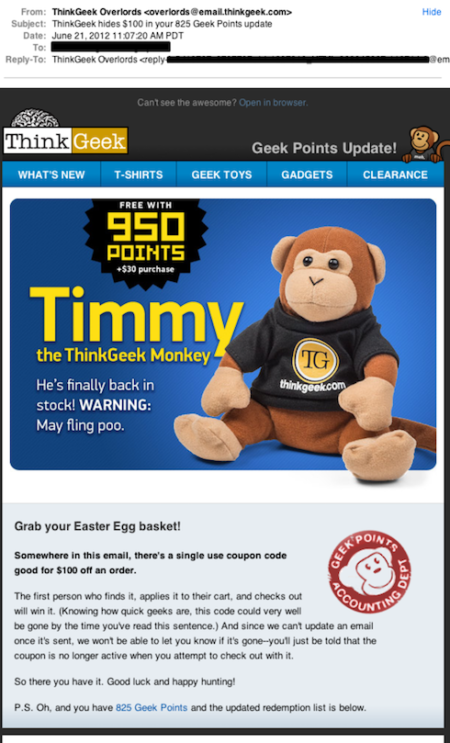How to make sure your mail is read
- laura
- July 10, 2012
- Best practices
ThinkGeek have a bit of a challenging audience to connect with. Many of their customers are, well, geeks. And many geeks have a reputation for being suspicious of marketing. I’d even go so far as to say that ThinkGeek has a bigger marketing challenge than other popular retailers.
One of the challenges all marketers face, though, is getting people to actually open and read an email carefully. ThinkGeek have addressed this challenge by turning reading email into a competitive game.
In June they sent out an email with a hidden coupon code in it. The first person to redeem the code received $100 off their order. What a creative way to get people to actually look through an email and make a purchase.
This, of course, is not a new marketing technique. I have at least 2 different Sigma t-shirts using the same style of marketing. This was in the dark ages and we didn’t have online forms, but the new catalog came with a postcard of questions to answer and return and the first 100 post cards got t-shirts. It was actually kinda nifty. As head tech, I got catalogs all the time. But answering the questions got me to look through the Sigma catalog and see their new products. Plus! T-shirt!
What new an interesting ways have you seen marketers use to engage recipients?